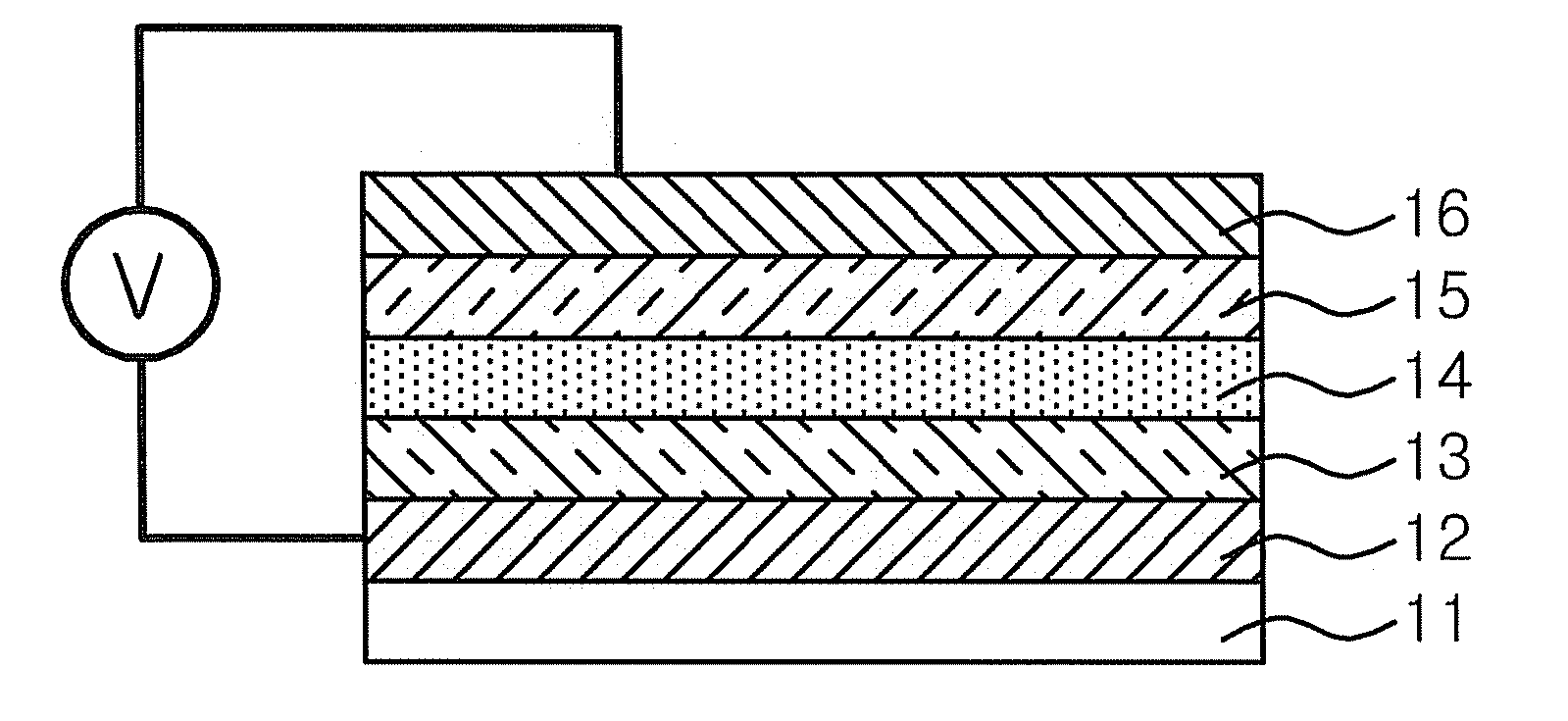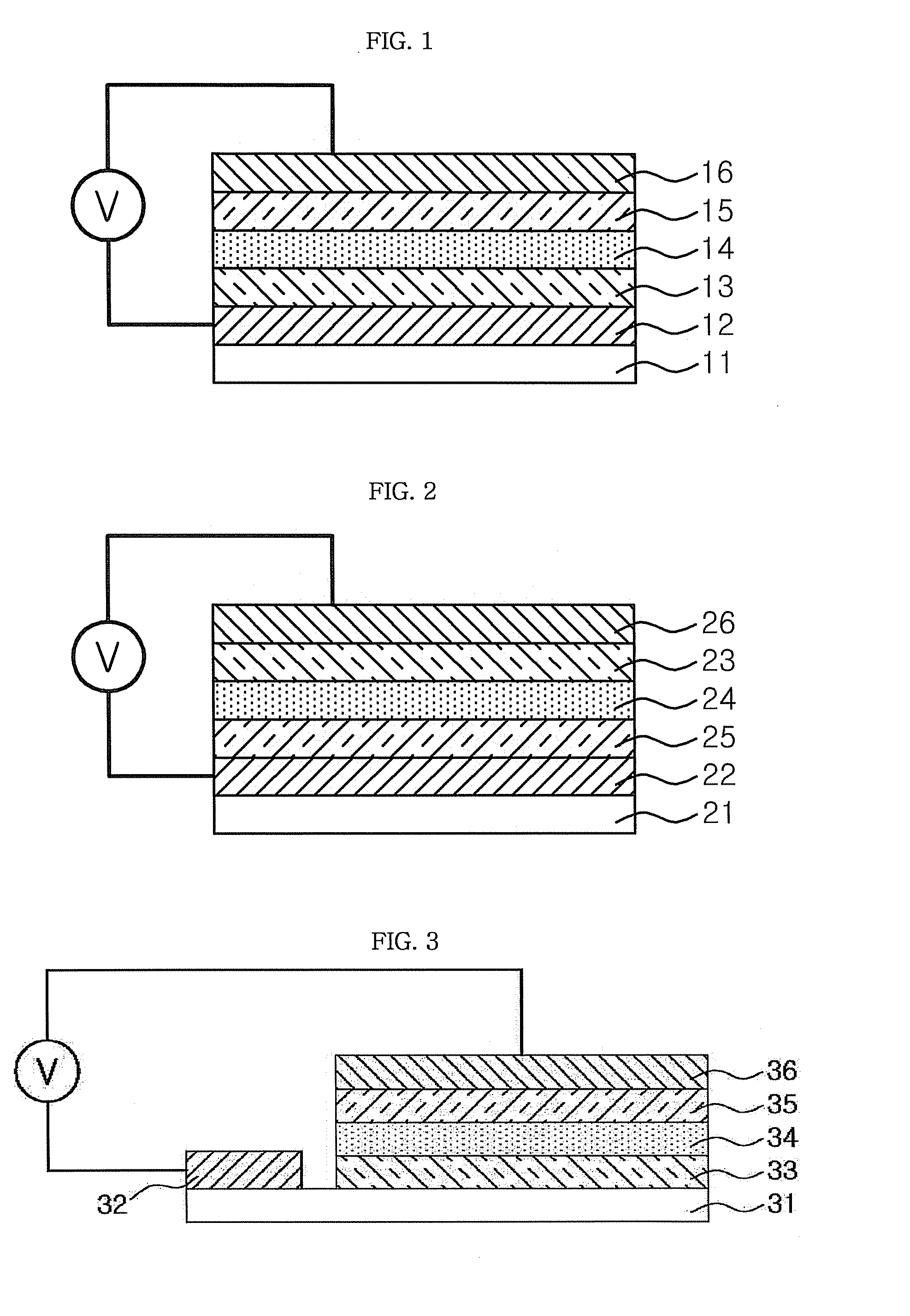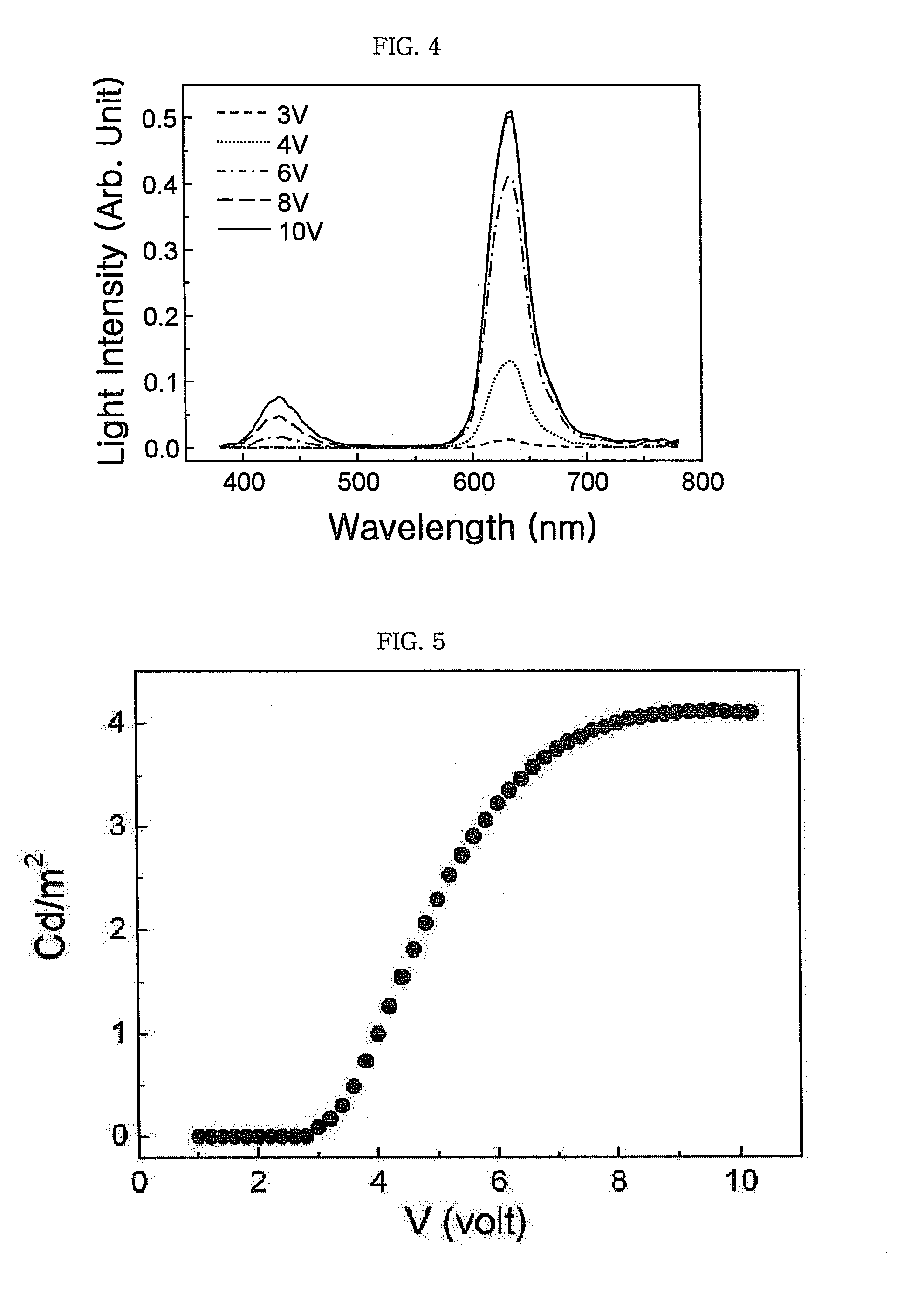Inorganic electroluminescent diode and method of fabricating the same
- Summary
- Abstract
- Description
- Claims
- Application Information
AI Technical Summary
Benefits of technology
Problems solved by technology
Method used
Image
Examples
example 1
Fabrication of Electroluminescent Diode of Crystalline HTL and Amorphous ETL Structure
[0052]In FIG. 3, on one surface of a sapphire substrate 31, palladium was deposited to a thickness of 50 nm by thermal evaporation, followed by deposition of gold (Au) to a thickness of 200 nm was deposited, thus forming a palladium / gold alloyed electrode 32. Thereafter, a p-doped crystalline GaN thin film having a thickness of 2.5 μm was grown on the sapphire substrate 31 by MOCVD. Further, a hole transport layer (“HTL”) 33 was grown to a thickness of 200 nm at a substrate temperature of 1050° C.
[0053]On the GaN thin film, a solution of 0.3 wt % of red CdSe / ZnS core / shell nanocrystals (Evidot® 630 nm absorbance) (Evident Technology, trade name: Evidot® Red (CdSe / ZnS)) in chloroform was dispensed and spin coated at 2000 rpm for 30 sec, and then dried at 50° C. for 5 min, thus forming a semiconductor nanocrystal layer 34 of 25 nm thickness.
[0054]Subsequently, TiO2 was applied to a thickness of 60 nm...
example 2
Fabrication of Electroluminescent Diode of Crystalline HTL and Liquid Amorphous ETL Structure
[0056]On a sapphire substrate, a p-doped crystalline GaN thin film was grown to a thickness of 200 nm at a substrate temperature of 1050° C. by MOCVD, thus forming a hole transport layer. On the p-doped crystalline GaN thin film, a solution of 0.3 wt % of red CdSe / ZnS core / shell nanocrystals in chloroform was dispensed and spin coated at 2000 rpm for 30 sec, and then dried at 50° C. for 5 min, thus forming a semiconductor nanocrystal layer of 25 nm thickness.
[0057]Thereafter, an SiO2 thin film about 1 nm thick was formed on the completely dried semiconductor nanocrystal layer by e-beam evaporation, thus forming a protective layer. Then, TiO2 precursor sol (DuPont Tyzor® BTP, 2.5 wt % in butanol) was spin coated at 2000 rpm for 30 sec on the protective layer, dried for about 5 min at 50° C., and annealed at 100° C. for 30 min, thus forming an electron transport layer in the form of an amorpho...
example 3
Fabrication of Quantum Dot Electroluminescent Diode of Amorphous (CdTe, HTL) and Amorphous (TiO2, ETL) Structure
[0059]A glass substrate having ITO features patterned thereon was sequentially washed with neutral detergent, deionized water, water, and isopropyl alcohol, and then was subjected to UV-ozone treatment, and a CdTe thin film of 40 nm thickness was subsequently vacuum deposited on the ITO substrate. The temperature of the substrate was maintained at about 200° C., and an amorphous CdTe thin film about 40 nm thickness was formed. Subsequently, a semiconductor nanocrystal layer, an ETL, and an electrode were sequentially deposited on the CdTe thin film in the same manner and having the same thicknesses as provided in Example 1, thus fabricating an inorganic electroluminescent diode.
[0060]FIG. 4 shows the light intensity of the inorganic electroluminescent diode fabricated in Example 1. As shown in FIG. 4, the above electroluminescent diode was confirmed to emit light at 623 nm...
PUM
 Login to View More
Login to View More Abstract
Description
Claims
Application Information
 Login to View More
Login to View More - R&D
- Intellectual Property
- Life Sciences
- Materials
- Tech Scout
- Unparalleled Data Quality
- Higher Quality Content
- 60% Fewer Hallucinations
Browse by: Latest US Patents, China's latest patents, Technical Efficacy Thesaurus, Application Domain, Technology Topic, Popular Technical Reports.
© 2025 PatSnap. All rights reserved.Legal|Privacy policy|Modern Slavery Act Transparency Statement|Sitemap|About US| Contact US: help@patsnap.com



